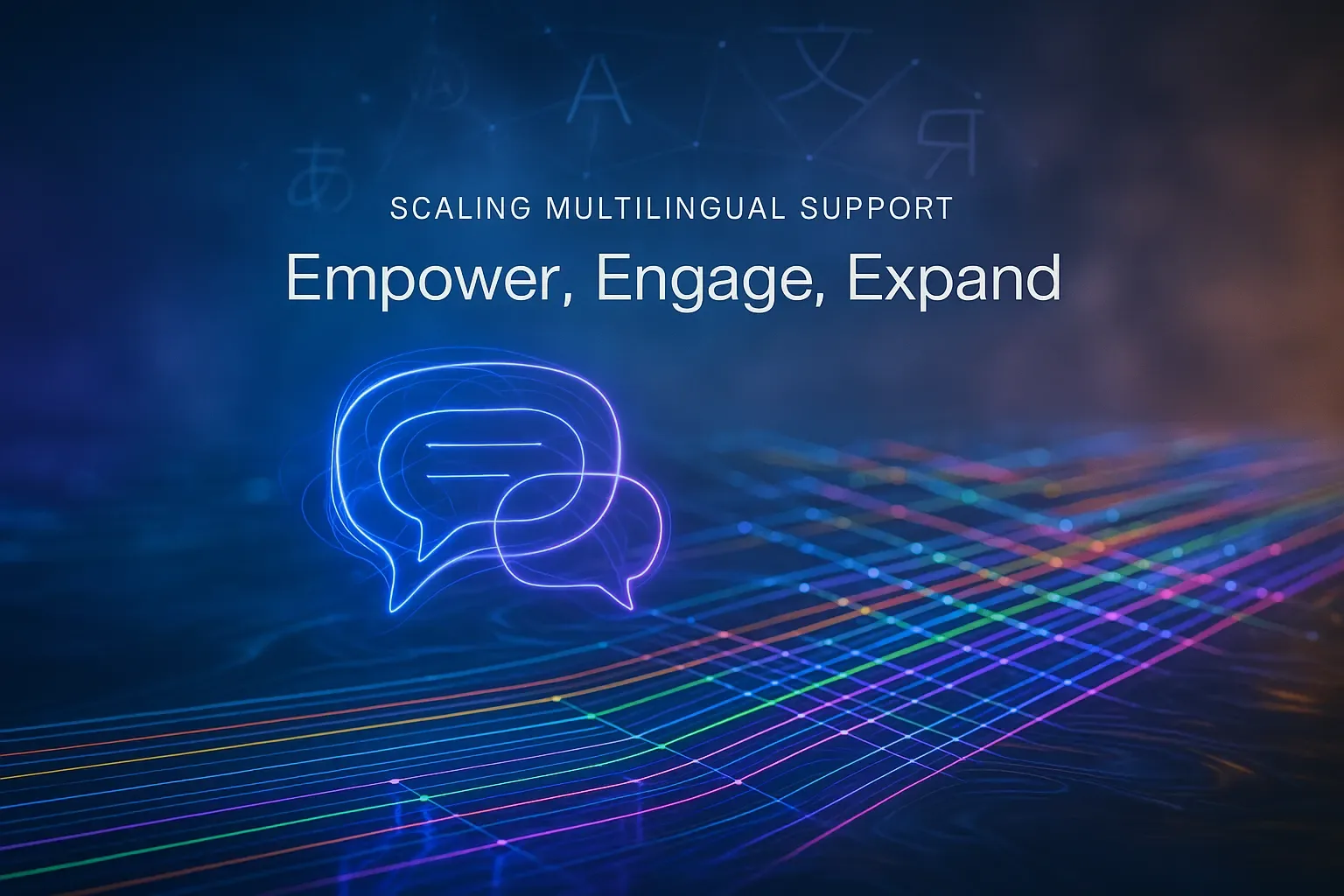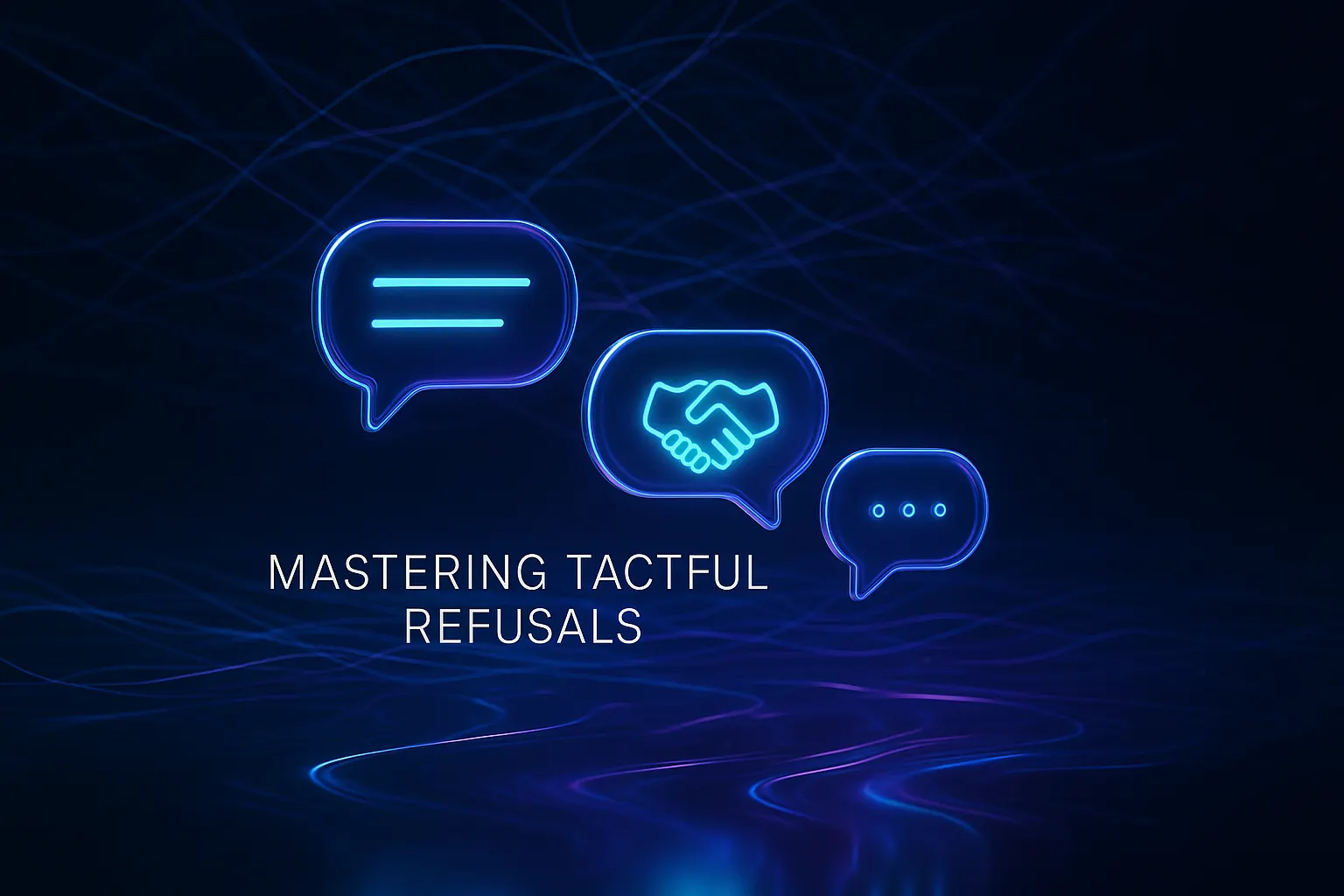Your next customer speaks a language you did not expect
Your support queue already demonstrates the growing linguistic diversity of your customer base. Messages in various languages, from Spanish and Polish to Thai, reach your inbox throughout the day if you sell globally. As your international presence grows, this pattern becomes more pronounced. For businesses with a global reach, responding in 50+ languages is becoming less of a stretch goal and more of a service standard that protects revenue and trust.
True multilingual support is far more than ticking a translation box. It is a comprehensive system, spanning people, processes, data, and tools. The benefits are tangible: faster response times, fewer misunderstandings, and stronger customer relationships in every market you serve.
What “50+ languages” really means in practice
Delivering effective language coverage goes beyond listing supported languages in your marketing materials. True coverage addresses regional nuance, tone, and context, while also safeguarding consistent product terminology across every locale.
- Locales, not just languages: Portuguese in Brazil and Portugal have significant differences. They should be treated as distinct markets.
- Formality and tone: Languages like German distinguish formal and informal communication. Your brand’s tone must adapt to both.
- Terminology control: Maintain a glossary to ensure feature names and legal terms remain consistent.
- Context awareness: Support tickets often reference prior conversations and attachments. Your system needs to interpret the full context.
- Edge cases: Local conventions for names, addresses, numbers, and dates can carry different meanings and must be managed correctly.
When you design workflows to account for these details, you minimize rework and avoid the customer churn that results from minor errors.
Where plain machine translation stops helping
Basic translation engines often fail to capture the intent behind a message. They stumble on specialized terminology, sarcasm, policy nuances, and your brand’s unique tone, leading to replies that can sound robotic or even unintentionally impolite.
- Ambiguity: Words can have different meanings depending on context, such as feature names versus billing terms.
- Gender and formality: Many languages require distinctions that English does not.
- Compliance language: Refunds, warranties, and security communications require absolute clarity and precision.
Translation alone is not sufficient. What you need is guidance that enables agents to draft complete replies, in the right style and with accurate information for each customer.
A practical roadmap to 50+ languages
- Map demand: Tag and analyze tickets by language to forecast volume by hour and channel.
- Set quality bars: Define quality standards for different ticket types and topics; not every scenario requires the same level of scrutiny.
- Build a glossary: Standardize product names, legal clauses, and sensitive phrases.
- Choose the language layer: Integrate translation, terminology management, and AI writing assistance.
- Integrate with your CRM: Keep agents operating within a single platform to avoid context loss from copying and pasting.
- Route smartly: Assign high-risk cases to bilingual agents or experienced reviewers.
- Review and learn: Regularly sample tickets, updating your glossary and templates as needed.
- Automate safe steps: Macros and status updates can be easily localized.
This approach allows you to scale efficiently, without the early burden of hiring for every rare language immediately.
Metrics that keep you honest
Monitor performance at the local level, global averages can mask regional gaps.
- First response time: Measure per language and channel for specific insights.
- Average handle time: Track spikes, especially after product changes or launches.
- Reopen and transfer rates: These metrics highlight breakdowns in understanding or loss of context.
- CSAT by language: Review customer satisfaction feedback for clarity and tone issues.
- Terminology errors: Log glossary breaches and address recurring issues.
Your dashboards should allow detailed drill-downs by language, tier, topic, and agent. Make gaps visible and resolve them during weekly operational reviews.
Build, buy, or blend
There are three practical models for scaling multilingual support, each suited to varying levels of ticket risk, volume, and budget discipline.
Model 1: Translation plus peer review
Agents draft responses which bilingual peers review. While this achieves high quality, it can slow down your operation and increase costs as volume grows.
Model 2: Multilingual agent pods
Dedicated agents handle top-priority languages, with translation used for overflow. Coverage remains stable but scaling with demand or seasonality can be challenging.
Model 3: AI writing assistance in your CRM
Agents work mainly in one language while AI drafts replies in each customer’s preferred language, using your glossary and templates. High-risk cases are escalated for review. This model ensures rapid scaling with consistent messaging.
Tool landscape in late 2025
Numerous tools help you achieve support in 50+ languages. Each addresses a different part of the workflow, so prioritize overall stack fit, not just translation accuracy.
- DeepL: Delivers high-quality translations and terminology management, ideal for product and support content.
- Typewise: AI writing support embedded in email, chat, and CRMs. Adapts to your brand style and glossary, and prioritizes privacy.
- Unbabel: Incorporates human review for complex tickets, suitable for high-compliance industries.
- Google Translate with glossary: Extensive language coverage, useful for bulk content and internal communications.
- Language I/O: Provides CRM integrations for rapid deployment across platforms.
- Zendesk and Intercom features: Offer built-in translation and macros, effective for routine communication but limited in custom tone control.
Shortlist two or three tools, then perform a blind test with real-world tickets. Always include regional reviewers in your testing process.
Integration patterns that actually work
Centralize your agent workflows, context switching erodes both speed and quality. These approaches help streamline the process:
- Inline drafting: Enable agents to draft and translate replies directly within your CRM, using templates and glossary checks.
- Bidirectional history: Store both the original and localized replies for easy audits and searches.
- Smart routing: Assign legal or sensitive topics to trained reviewers automatically.
- Knowledge base sync: Localize your top help articles and link them as snippets in responses.
For a technical overview of integrating these components, see this guide to building an AI stack for customer success.
Quality control without slowing the queue
Maintain high standards without impeding your team’s pace by implementing background checks such as:
- Glossary enforcement: Block outgoing replies that violate designated terminology.
- Style checks: Automatically enforce appropriate tone and clarity rules for each language.
- Sampling: Rotate ticket audits daily, concentrating on new features or policy-related issues.
- Auto summaries: Generate brief overviews of long threads to speed up quality reviews.
Share weekly review outcomes, highlighting exemplary replies to guide teams on tone and structure expectations.
Privacy, security, and regional compliance
Language data is customer data and requires stringent care. Scrutinize your measures before broad adoption.
- Data residency: Ensure your tools allow storage in required regions to comply with local laws.
- PII handling: Redact sensitive personal information before processing or sharing tickets.
- Access controls: Limit access to both original and translated content to only those who need it.
- Audit trails: Log every draft, edit, and approval step for regulated workflows.
Privacy-first tooling reduces the risk of unforeseen issues and facilitates the process of passing vendor reviews and customer audits.
Onboarding your team for multilingual work
Your agents should concentrate on understanding customer intent, not getting bogged down by language technicalities. Provide concise guidance and rapid feedback:
- Micro training: Deliver short modules on tone, etiquette, and formality for each language.
- Template packs: Supply ready-to-use responses for common situations like refunds or account changes.
- Escalation rules: Clarify when agents should involve native speakers or specialized reviewers.
- Playbooks: Offer before-and-after examples for complex language challenges.
Recognize strong localized replies and use them as coaching tools across regions.
Cost control without cutting quality
Adding languages can quickly escalate costs. Use workflow optimization and automation to manage expenses, reserving human operations for cases demanding nuanced judgment.
- Triage automation: Automatically classify intent, urgency, and topic prior to response drafting.
- Template priority: Apply reusable templates to the most repetitive flows first.
- Review thresholds: Gradually reduce manual reviews as quality confidence increases.
- Deflection signals: Track help article views and analyze prevented tickets by language.
This approach ensures you maintain service excellence while keeping costs predictable during increased activity or new market launches.
Start with five languages, scale to 50+
You don’t need to launch everything at once. Test the model within a controlled group, then expand in gradual phases.
- Wave 1: Focus on your top five languages by volume. Deploy your glossary, templates, and enable inline drafting.
- Wave 2: Add ten more languages, alongside sampling and establishing reviewer pools.
- Wave 3: Expand to cover less common languages, implementing clear rules and handoffs for low-volume cases.
This phased approach leads to stable processes, a consistent brand voice, and robust metrics across all regions.
A note on Typewise and your stack
Typewise fits seamlessly into Model 3. It empowers agents to draft accurate, brand-consistent replies in any supported language, directly within your CRM, email, and chat workflows. Typewise upholds your glossary, enforces your brand’s tone, and treats privacy as a non-negotiable priority. Human oversight remains central where judgment or local context is essential.
Ready to serve in 50+ languages
If you’re seeking a practical path to scalable multilingual support, we’re here to help. See how Typewise can integrate with your customer support stack and workflows. Talk with Typewise to review real examples and start planning your first expansion phase.
FAQ
Why is multilingual support so critical for global businesses?
Without multilingual support, businesses risk alienating potential customers due to misunderstandings or perceived lack of care. True language support goes beyond simple translation; it requires cultural understanding and consistency in brand messaging to maintain trust and revenue.
Isn't using machine translation solutions enough for multilingual customer service?
Machine translation often fails by missing nuances like sarcasm or industry-specific terms, resulting in robotic and sometimes offensive responses. They also lack the capability to capture the necessary context, making human oversight and guidance crucial.
How important is it to consider regional differences in language support?
Ignoring regional differences can lead to poor customer experiences and potential churn. Specific dialects, formalities, and cultural contexts must be accounted for, or you risk diluting your brand and complicating communication efforts.
What are the risks of not having a centralized multilingual system in place?
Decentralized systems can cause information loss due to context switching, slow response times, and inconsistent messaging. This inefficiency can harm customer satisfaction and increase operational costs through repeated errors.
Is privacy truly a significant concern when providing multilingual support?
Absolutely, as language data involves customer information, ensuring privacy is a legal and ethical obligation. Failing to comply with regional data laws not only risks penalties but also deteriorates customer trust.
Can automation completely replace human oversight in multilingual customer service?
While automation can increase efficiency, it cannot replace human insight for high-stakes or nuanced situations. Balancing automation with skilled manual oversight is necessary to maintain quality and adapt to complex customer interactions.
What should companies focus on when expanding multilingual support incrementally?
Prioritize high-demand languages and establish a sound process before tackling rarer ones. A step-by-step approach reduces risk, allows for optimizing workflows, and ensures consistent service as you scale.
How do terminology errors impact customer service effectiveness?
Terminology errors create misunderstandings, disrupt continuity, and can lead to legal implications if not managed correctly. Consistent terminology across all languages and locales is critical to maintaining clarity and trust.






